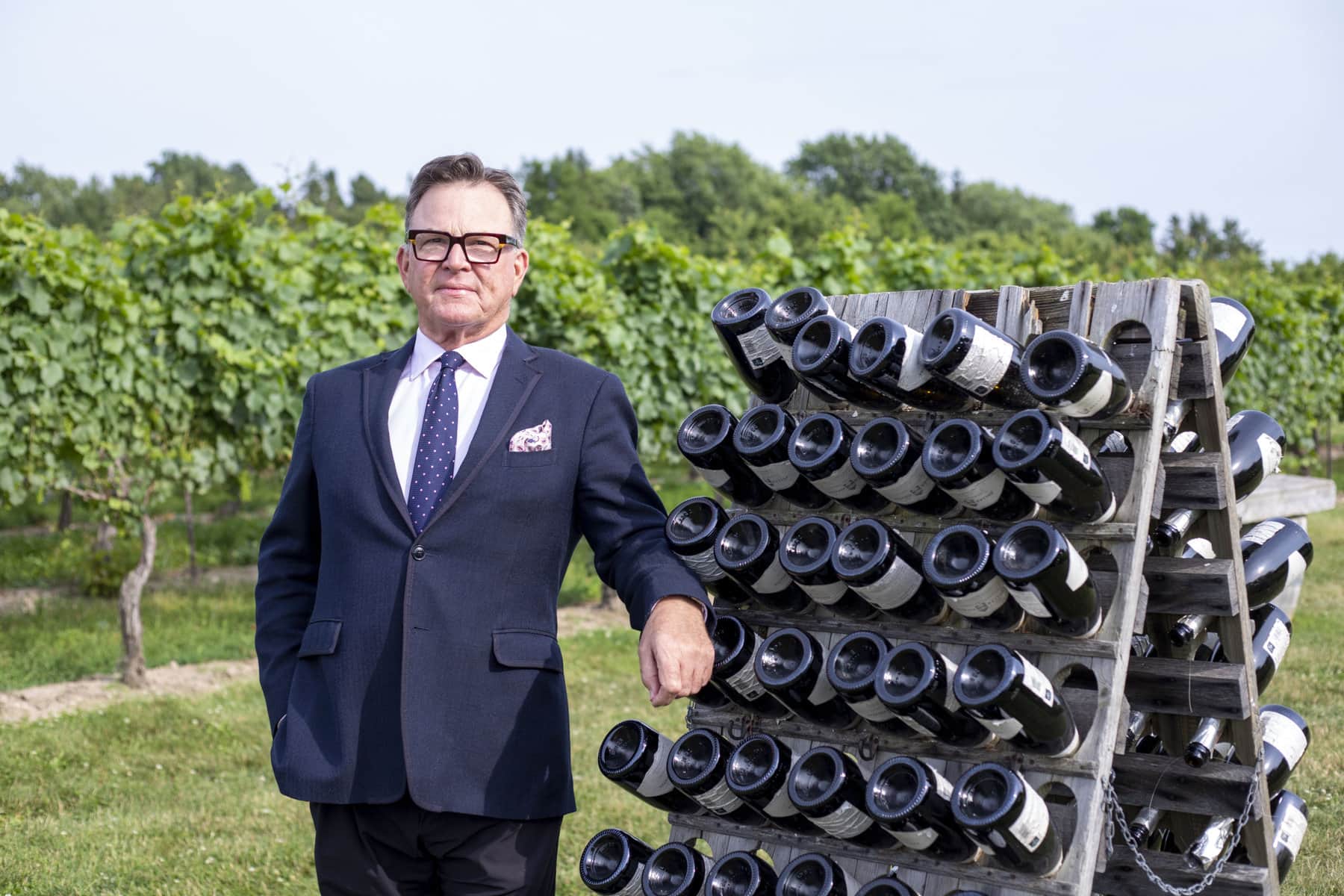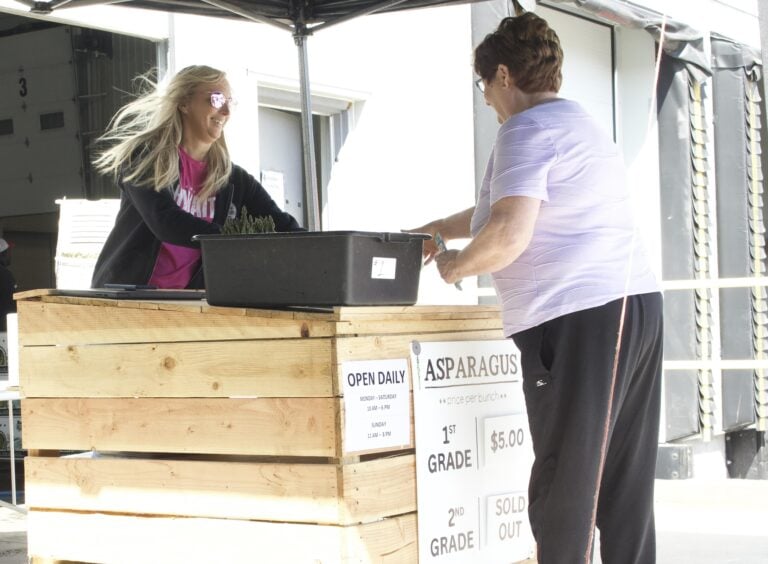Better support and fewer taxes are among changes urged
Niagara’s wine sector is the key to bringing billions of dollars of economic benefits to the region, a new report says.
The report, published last week and available online at uncorkontario.ca, says the wine industry could bring an additional $8 billion in gross domestic product to the region over the next 25 years.
Excessive taxes, restrictions on distribution and lack of government support for the industry are among the major concerns and roadblocks to that happening, the report says.
John Peller, CEO of Peller Estates Winery and a member of Wine Growers Ontario, believes there are no ifs, ands or buts about it — Niagara’s wine sector is the key, and if properly supported, could open the door to a world of economic growth.
“I didn’t want this to be rhetorical or speculative — the reality is, it’s very factual,” said Peller.
The report by Deloitte Canada was commissioned by Ontario Craft Wineries, Tourism Partnership of Niagara and Wine Growers Ontario. It looks at a collection of key industries in Niagara and the role the wine sector plays in benefiting surrounding industries.
It also examines how the wine industry has fuelled economic growth in other parts of the world.
To do that, Deloitte researched leading wine regions around the world, like Kelowna, B.C., Italy and France, to better grasp best practices used and the role wine plays in each area’s economy and the economic benefits the sector provides.
“The essential premise of that report is to understand the role a truly quality premium wine region can play as a catalyst in growing the related economies that it supports,” said Peller.
Not only does Niagara supply 80 per cent of Canada’s wine and grape production, Niagara is one of the only regions in the world where premium wine grapes grow, thanks to its microclimate conditions.
The report argues that a supported wine sector would, in turn, benefit a group of industries the report calls the “Niagara Cluster,” nestled within the region — such as hospitality, tourism, arts and culture, and the entertainment industry.
Given that Niagara-on-the-Lake has more than 50 wineries and draws millions of tourists each year, supporting the wine industry would have a positive impact on the little town, those in the industry argue.
“We have this incredible opportunity to build a preeminent destination for wine, food and culture,” said Peller. “Let’s go, let’s do it.”
Aaron Dobbin, president of Wine Growers Ontario, said while people come here to visit the wineries, they often head into Old Town for a show at the Shaw Festival or to visit some shops, maybe eat dinner at a restaurant and then end up at one of NOTL’s hotels or bed and breakfasts.
“That’s the beauty of the Niagara Cluster: it is really economy-wide,” he said.
Niagara’s wine industry is the spark, but “the effects will be felt across the entire economy,” he added.
Among others, the Niagara-on-the-Lake Museum, the Niagara Pumphouse Arts Centre and the Niagara Jazz Festival could see the benefits of a well-supported wine industry, said NOTL Lord Mayor Gary Zalepa.
“It’s time we leverage the assets that we have in Niagara,” he said in an interview.
Zalepa noted that the construction industry also could indirectly benefit.
“There would be infrastructure required for this, there would be investments in capital building property, and that kind of stuff would drive jobs in construction,” he said.
He added that it could bring more homes and people to the area as well as jobs.
There’s also a business opportunity in Niagara that isn’t found in many other jurisdictions, said Anthony Annunziata, president of Tourism Partnership Niagara — they can hold meetings in vineyards, cellars and estates rather than at hotels and conference centres.
Kelowna, B.C., and Napa Valley in California are examples cited in the report of cluster regions that used the wine sector to successfully boost economic growth.
If Niagara had the same growth as Kelowna, “it is estimated that investment in the Niagara regional economy would have been $4 billion more between 2009 and 2019,” the report says.
Countries such as France, Italy and Spain that have among the most successful tourism and hospitality economies in the world, according to the World Tourism Organization, are premium wine regions, said Peller.
Those nations have used their wine industry to grow world-class tourism destinations, he said.
“They know why they have the number one, two and three tourism regions in the world because of wine, food and culture,” said Peller.
Niagara has it all here and Peller wants people to recognize that.
“We want to be as good as the best in the world because our wines are as good as the best in the world,” he said.
However, Ontario falls short in a few areas where other places shine, Peller and Dobbin argued.
Other regions are “aggressively supporting their agricultural and wine industries as a catalyst to drawing world destination travellers,” Peller said.
In Ontario, there are challenges preventing Niagara’s unique wine region from flourishing — taxation and distribution being top of the list, Dobbin said.
“(In) our industry, we pay about $970 million in taxes and markups to various levels of government and the LCBO,” he said.
Ontario wine producers, said Peller, pay some of the highest taxes in the world.
“I can tell you the reason is because, instead of our policy leadership coming from agriculture or tourism, it came from the lottery and gaming commission: people who are in charge of sin taxes,” said Peller.
“Sin taxes” are charged on goods seen as undesirable or harmful, and alcohol is on the list along with gambling and tobacco.
The federal government puts the wine industry under the same umbrella as gambling, cannabis and tobacco, rather than considering it agricultural, said Annunziata.
“So let’s start there, federally, let’s recognize it as an agricultural industry,” he said.
Peller said places such as Spain, Italy, France and Australia, “not only do they not tax them, they also provide subsidies to them to ensure that they’ll invest capital and grow their region.”
He said Ontario should have changed its policies around taxing the wine industry many years ago. “I’ve told people, half tears in my eyes, like, why has it taken us this long to get there?”
Zalepa said reducing the taxes doesn’t mean cutting overall revenue.
“The opportunity is to grow the business such that the taxes generated from the growth are going to far outweigh any of the small taxes generated in the short term,” he said.
Distribution of Ontario wine is also a huge roadblock for the province’s wine producers, since it has to be done through the LCBO and faces strict rules on inter-provincial trade.
Wineries in other parts of Canada, like British Columbia, Manitoba, Prince Edward Island and Nova Scotia can directly deliver wine to customers and retailers across the country — a luxury Ontario doesn’t have.
Peller said Ontario has the same market shares as it did 30 years ago and the LCBO is more focused on promoting imported wine than domestic vintages.
Imported wines represent about 75 per cent of total LCBO wine sales, according to the province.
Regions like British Columbia, Australia and the United States have domestic market shares by volume of 47, 82 and 60 per cent, respectively.
The report notes that if Ontario’s market share by sales matched B.C.’s, the provincial economy would receive upward of $800 million in additional GDP over a 10-year span.
Focusing on dominating Ontario’s domestic market share is one of the steps forward in supporting the wine sector, Deloitte said.
Annunziata said the next step is allowing the government to absorb this information so it can hopefully start making the changes called for.











